- The revenue growth estimates are steady in the next two years
- EBITDA can increase sharply in NTM 2023 and can accelerate in the following year
- The stock is reasonably valued versus its peers at the current level
In Part 1 of this article, we discussed Patterson-UTI Energy’s (PTEN) outlook, performance, and financial condition. In this part, we will discuss more.
Linear Regression Based Forecast
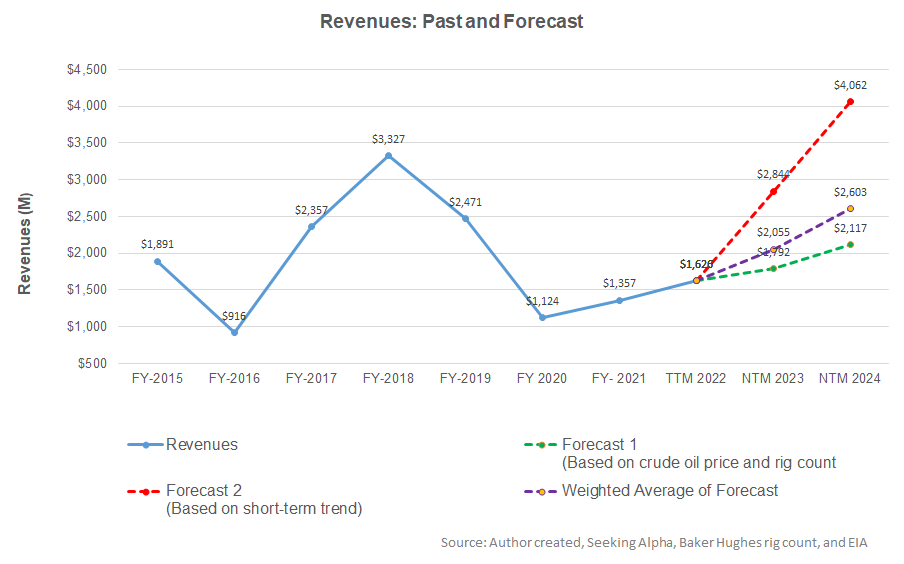
Observing a regression model based on the historical relationship among the crude oil price, rig count, and PTEN’s reported revenues for the past seven years and the previous four-quarters suggests that its revenues will increase steadily.
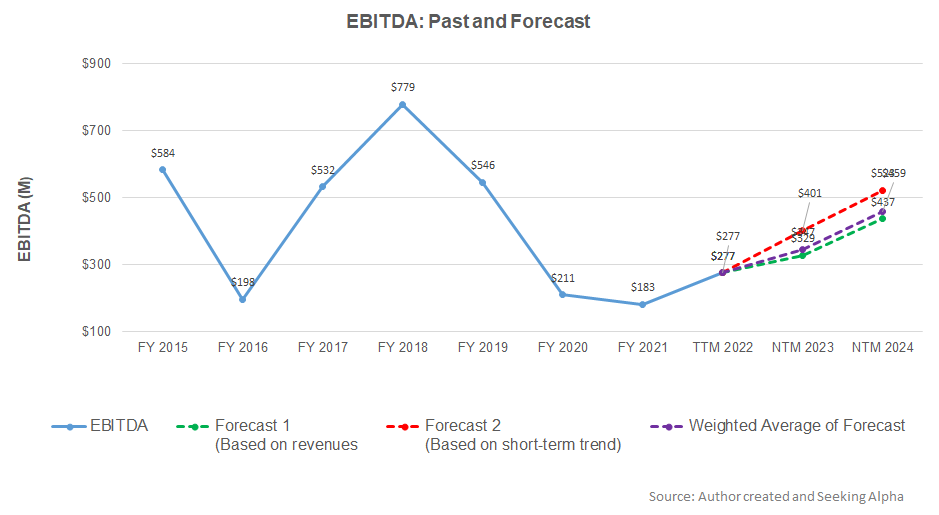
Based on the regression models and the average forecast revenues, the company’s EBITDA will increase sharply in the next 12 months (or NTM) in 2023. In NTM 2024, the model suggests the company’s EBITDA growth can accelerate.
Target Price And Relative Valuation
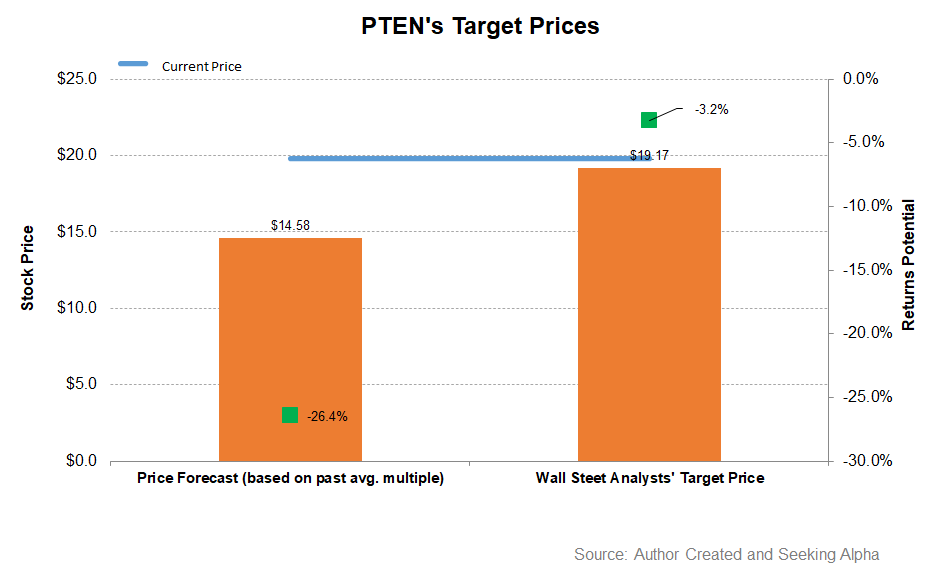
The stock’s returns potential using the past five-year average multiple (9.5x) is lower (26% downside) than the returns potential using Wall Street’s sell-side analysts’ target price (3.2% downside) from the stock.
What Does The Relative Valuation Imply?
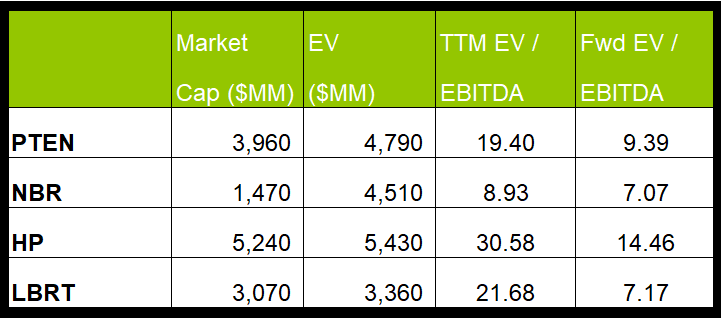
Patterson-UTI’s current EV/EBITDA multiple is 19.4x. The stock’s past five-year average EV/EBITDA multiple was 9.4x. So, it is currently trading at a premium to its past average.
PTEN’s EV/EBITDA multiple is higher than its peers’ (NBR, HP, and LBRT) average of 20.4x. Because PTEN’s forward EV/EBITDA multiple contraction is steeper than peers, it typically reflects a higher EV/EBITDA multiple compared to its. So, the stock is reasonably valued at the current level.
Analyst Rating And Target Price
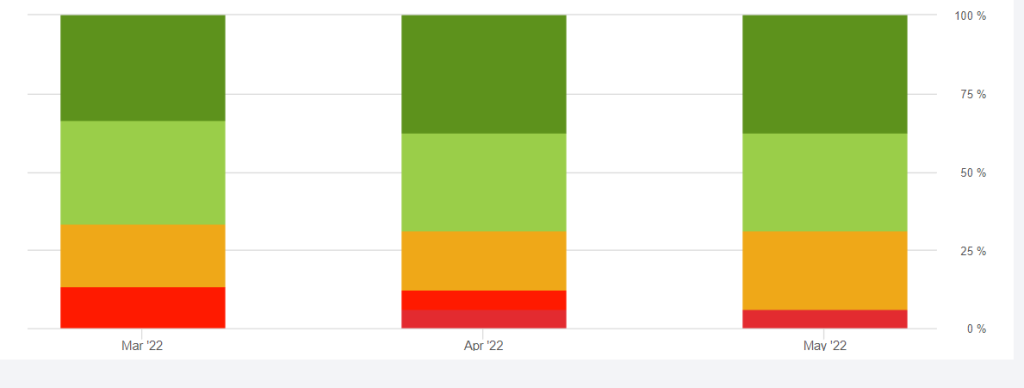
According to data provided by Seeking Alpha, 11 sell-side analysts rated PTEN a “buy” in May (including “Strong Buy”), while four of the analysts rated it a “hold.” Only one analyst rated it a “sell.” The consensus target price is $19.17, suggesting a 3% downside at the current price.
What’s The Take On PTEN?
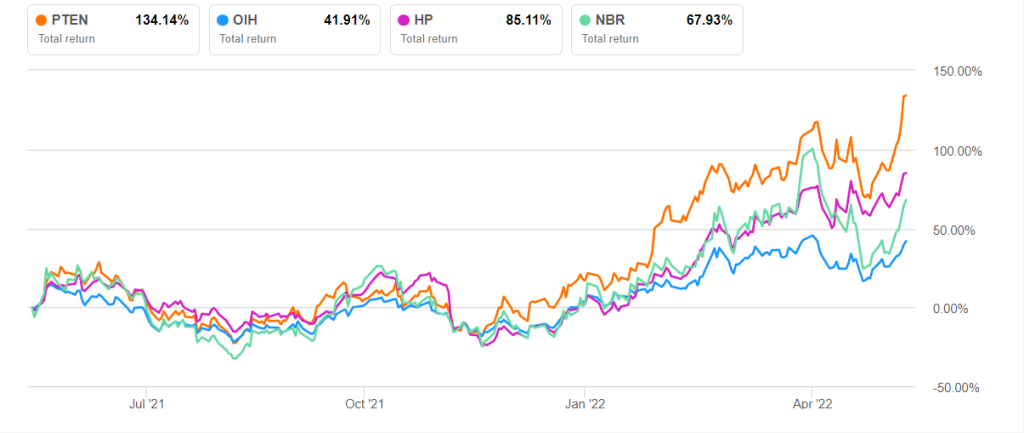
PTEN will incrementally add a few more rigs in Q2 2022. Plus, the 12th frac spread, which has been overdue to join the fleet, appears to be happening in Q2. The leading-edge day rates are improving, especially for the ESG-compliant dual-fuel pumps. Because of the short supply and improving fracking activity, the average revenue and margin should increase in contract drilling and pressure pumping in 2022. A robust margin in recent times prompted the stock to outperform the VanEck Vectors Oil Services ETF (OIH) in the past year.
Investment in new technologies can increase capex in the first half of 2022. However, an increased activity level led to a higher working capital requirement, leading to significant pressure on free cash flow. Nonetheless, the balance sheet is robust with sufficient liquidity. The stock is reasonably valued but with a negative bias at the current level. Investors might like to hold the stock with an expectation of moderate returns in the medium term.













